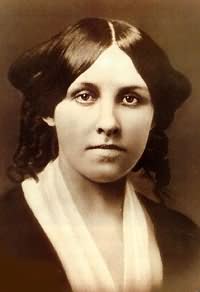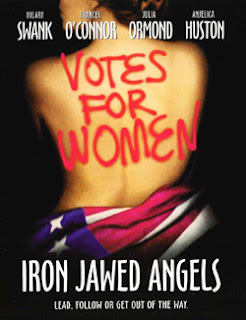Despite of the fact that all the events we have mentioned in our posts had occurred several years ago, we can even find that the Suffragist are present nowadays in our lives:
1. Today’s Google Doodle is suffragist Alice Paul
“I never doubted that equal rights was the right direction. Most reforms, most problems are complicated. But to me there is nothing complicated about ordinary equality.” — Alice Paul
On January 11th, 2016 anyone who entered in Google saw this particular Doodle. And some of you could think: Who is she and why Google want to remember her?
She is Alice Paul, a New Jersey-born feminist, suffragist and political strategist and it would be her 131st birthday.
Google wanted to honor this powerful women because she dedicated her life to fighting for the equality of women. In addition, she authored the very first version of the Equal Rights Amendment, a document which guaranteed the equal rights for women.
As her as an example, we can see that the job, the effort and the sacrifice of the Suffragist were not a waste of time. Suffragist have changed the history and the point of view of the society.
2. Feminism
Suffragist started to fight for the equality between women and men, but nowadays, we find that this principal aspect has evolved into the “feminism”.
Feminism consists of defining, establishing, and achieving equal political, economic, personal, and social rights for women, but also for men.
Nevertheless, feminism has followed two different ways: positive and negative.
On the one hand, there are women who just want to get the equality between women and men and to be accepted by the society, but on the other hand, there are women more radical that exceed the limits until let men in a low place.
Let's move on now to some important people who are fighting for the gender equality:
EMMA WATSON
All we know this woman by her interpretation of Hermione Granger in the Harry Potter film series.
However, she has become a very influential person in the society nowadays owing to her speech in front of the United Nations introducing a new initiative for gender equality: feminism is not only a fight for women but also for men to join in.
As a consequence, she started the #HeForShe movement in order to invite men and boys to build on the work of the women’s movement as equal partners, crafting and implementing a shared vision of gender equality that will benefit all of humanity.Thanks to this, she was appointed as a UN Women Goodwill Ambassador of UN Women.
Moreover, HeForShe helps the UN Women’s work across its strategic pillars.
1) ACCELERATING WOMEN’S ECONOMIC EMPOWERMENT
2) ADVANCING WOMEN’S POLITICAL PARTICIPATION & LEADERSHIP
3) SUPPORTING WOMEN’S ROLE IN PEACE & SECURITY
4) ELIMINATING GENDER BASED VIOLENCE
Some important actors have shown their support to this movement as we can see in these photos:
 |
| Matthew Lewis |
 |
| Ben Barnes |
Origin of the HeForShe symbol
The HeForShe logo unites traditional icons of gender to create a new symbol for the shared humanity. Its dynamic shape and strong contrast remind us what’s possible when unique individuals stand together for the benefit of all.
More projects
Moreover, Emma has established her own feminist book club called “Our Shared Shelf”, addressed to anyone who wants to join it. (http://www.goodreads.com/group/show/179584-our-shared-shelf)
She was inspired by many books and essays about equality that she took for her work in the UN Women and she found inspiring facts that she would to share with everybody.
Every month, it is recommended a book to read and then, people can discuss and propose questions for others to express their feelings and opinions.
This initiative started with the lecture of the book My life on the Road written by Gloria Steinem— writer, activist, organizer, and one of the most inspiring leaders in the world— in which she reveals the story of her own growth in tandem with the growth of an ongoing movement for equality.
This type of projects contribute to people understand the importance of the gender equality and the fact of having the same opportunity in our society without discriminating anyone as well.
ELLEN DEGENERES
One of the biggest feminist figure nowadays is the famous Ellen DeGeneres, an American comedian, television hostess, actress, writer, producer and mainly a women’s right activist.
But she has been not only a women defensor, but also an outspoken LGBTQ (lesbian, gay, bisexual and transgender). She try to show people the power of the individual, that everyone can get wherever if they fight hard for it. And because of who she is, she shows the world she is a strong feminist who will get their dreams.
For the last 12-year, Ellen has used her public platform and her program (The Ellen DeGeneres Show) to highlight inequality and to create space to discuss about this thematic. In addition, in her programme she always speak about the power of women and about differences between women and men.
One of the most Ellen’s remarkable example is the famous “Pen for her” (a product lanced by Big): in one of the shows, Ellen explain the strange new line of Big. They lanced a kind of pen just for ladies, what made Ellen to be surprise because “we have always used pen for men !”
With this example, Ellen want to show the reality nowadays, and that even now, people try to put a wall between women and men. And It's for that she use an ironic voice to present the product to the public:
 This is totally real. They're pens just for ladies. I know what you're thinking. It's about damn time. Where have our pens been? Can you believe this? We've been using man pens all these years. Blech.They come in both lady colors, pink and purple, and they're just like regular pens, except they're pink so they cost twice as much. That is absolutely true as well.
This is totally real. They're pens just for ladies. I know what you're thinking. It's about damn time. Where have our pens been? Can you believe this? We've been using man pens all these years. Blech.They come in both lady colors, pink and purple, and they're just like regular pens, except they're pink so they cost twice as much. That is absolutely true as well.
As we can see, suffragist were and are everywhere and still nowadays are remembered. Thanks to the work of the women today, no matter from the country they come from (USA, UK,...), our society is getting more aware of this important topic: gender equality.
REFERENCES:






















